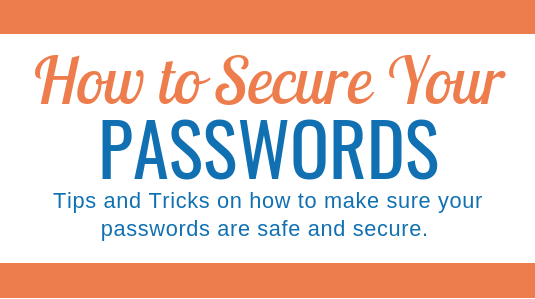No matter how many PC’s are on your network, one thing that can help protect your system from being compromised is: a great password.
Hackers want access to anything they can break into. If they can guess your password, you might as well hand over your wallet and keys to the building.
Best practices in password management:
- Attacks DO happen
There are three different methods hackers use to get into your network and files: brute force, dictionary attacks, and social engineering. The longer the password is, the more difficult it becomes to crack. Studies show that a password that is eight characters in length and uses lower-and upper-case letters, numbers, and keyboard characters has a higher probability of being secure. Simple passwords such as “atlanta” or “ilovefootball” can be easily guessed.
-
Password FAILS
You never want anything in your password that is personal and easy to guess.
- Never use only letters or only numbers
- Never use names of spouses, children, girlfriends/boyfriends or pets
- Never use phone numbers, social security numbers or birthdates
- Never use the same word as your log-in, or any variation of it
- Never use any word that can be found in the dictionary – even foreign words
- Never use passwords with double letters or numbers
Some of the top-rated worst passwords of all time are: password, abc123, admin, 123456, and the name of your company or department. Obviously, never leave it blank. That is handing the key over to the bad guys.
-
Password WINNING
One sure-fire tip to create difficult-to-crack passwords is substituting letters with characters and numbers. An example of this would be using “@tl@nt1$” opposed to “atlantis.”
-
Safeguard your password
Let’s face it. Sometimes it is difficult to remember all of our passwords and will want to write it on a piece of paper and place it under the keyboard or mouse pad. Or worse, you stick it right on your monitor. To help you remember your password, use it immediately. Then log in and out several times the first day. You can write it out several times on a piece of paper to help record it in your mind. Just remember to shred the paper afterwards. If at any time employees need to share a password, typically if one is on vacation and a needed file must be accessed, make sure to have the team leader change the password directly after that use and then again when the employee returns.
-
Change often
It is best practice to change your passwords every 30-90 days. If your employees do light surfing at lunch or on breaks, encourage them to change their passwords on personal web sites as well – such as banking, email accounts, shopping sites, and so on. Never use the same password on all of your sites unless you want to up your chances of financial ruin by a hacker gaining access to one username and password.
Click the image to download the infographic

.png?sfvrsn=3355c5ca_0)